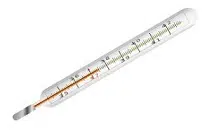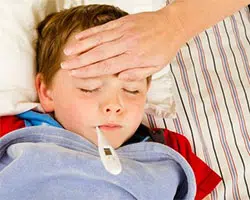 The Latin term febricŭla , which can be translated as "light fever" , came to our language as febricula . This notion is used in the field of medicine to refer to moderate hyperthermia that extends over time .
The Latin term febricŭla , which can be translated as "light fever" , came to our language as febricula . This notion is used in the field of medicine to refer to moderate hyperthermia that extends over time .
Hyperthermia is the pathological increase in body temperature . When a person has a low-grade fever, they register a temperature above 37 °C but below 38 °C . This situation can occur due to nervous reasons or some type of infection .
It is important to highlight that measuring our body temperature does not provide us with easily intelligible or decisive data, since the causes of an anomaly in this property are many. The action that must result in a value below or above normal is an investigation to find the problem and, only at this point, decide how to proceed to solve it.
Although we associate abnormal changes in body temperature with physical illnesses , such as colds or infections, they can also reflect a psychological disorder, and therefore the diagnosis should not be rushed in the presence of fever or low-grade fever.
If the body temperature rises even more, a fever occurs. In this case, the increase in temperature is usually accompanied by an increased frequency of breathing and pulse. It can be said that fever is an intensification of hyperthermia, the mildest state of which is low-grade fever.
Both low-grade fever and low-grade fever are the body's defensive mechanisms . Generally it is a reaction to the presence or action of a pathogenic agent. In the case of low-grade fever, since it represents a slight increase in temperature and is not associated with other more intense symptoms, it sometimes goes unnoticed.
Stress or a cold ( cold ) can be reasons for low-grade fever. This phenomenon can appear accompanied by glassy eyes, sweating, redness of the skin and cooling of the extremities.
 When the low-grade fever does not subside, or if it turns into a fever, it is advisable to consult a doctor to analyze the situation and make a diagnosis. The professional must be in charge of indicating what actions to take to overcome the state.
When the low-grade fever does not subside, or if it turns into a fever, it is advisable to consult a doctor to analyze the situation and make a diagnosis. The professional must be in charge of indicating what actions to take to overcome the state.
As expected, it is not easy for people outside the medical field to distinguish a fever from a low-grade fever, and this can lead to making poor decisions regarding treatment . The most delicate cases occur with very young children, since they do not have the possibility of clearly expressing what they feel, but it is the older people in their care who must interpret their symptoms and act accordingly to help them.
Up to three years of age, fever and low-grade fever are more common than in the rest of childhood, and parents tend to become easily alarmed as soon as they detect an alteration in their children's temperature. How do you know if a child has a fever or low-grade fever, and what is the appropriate way to proceed in each case? The most general advice is to consult with the pediatrician, something that we can currently also do from home via the Internet.
To know how the child is progressing, it is recommended to measure his temperature every fifteen minutes. Unlike low-grade fever, fever involves an axillary temperature equal to or greater than 38 °C, and a rectal temperature equal to or greater than 38.5 °C for children over one month of age; For the rest, if your rectal temperature exceeds 38 °C you can already talk about fever. In any case, it is recommended to drink plenty of water and avoid excess clothing.
